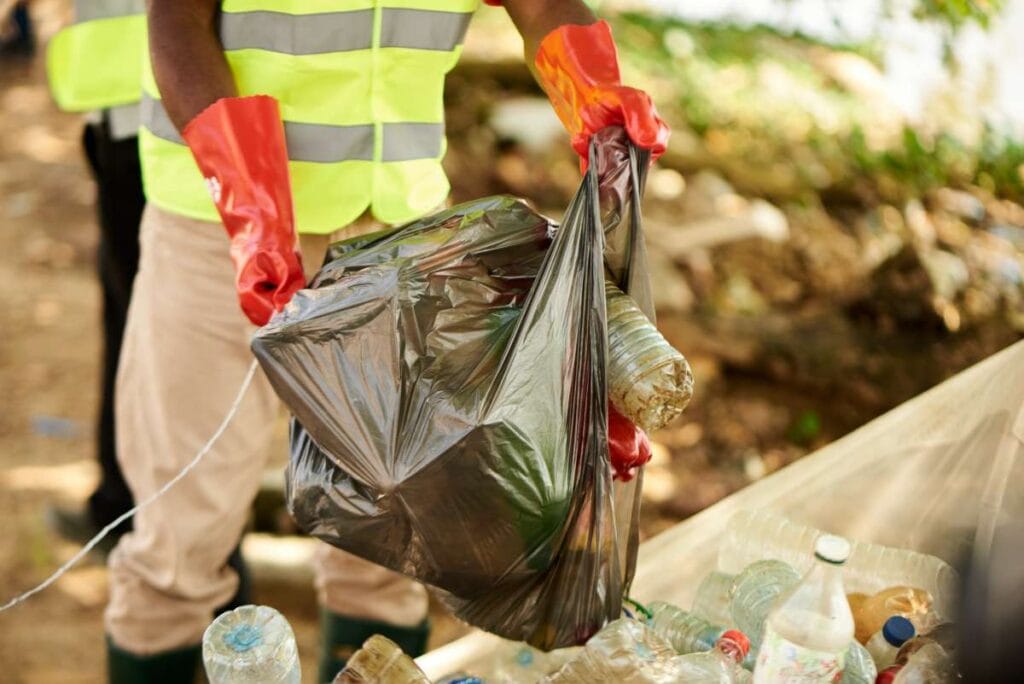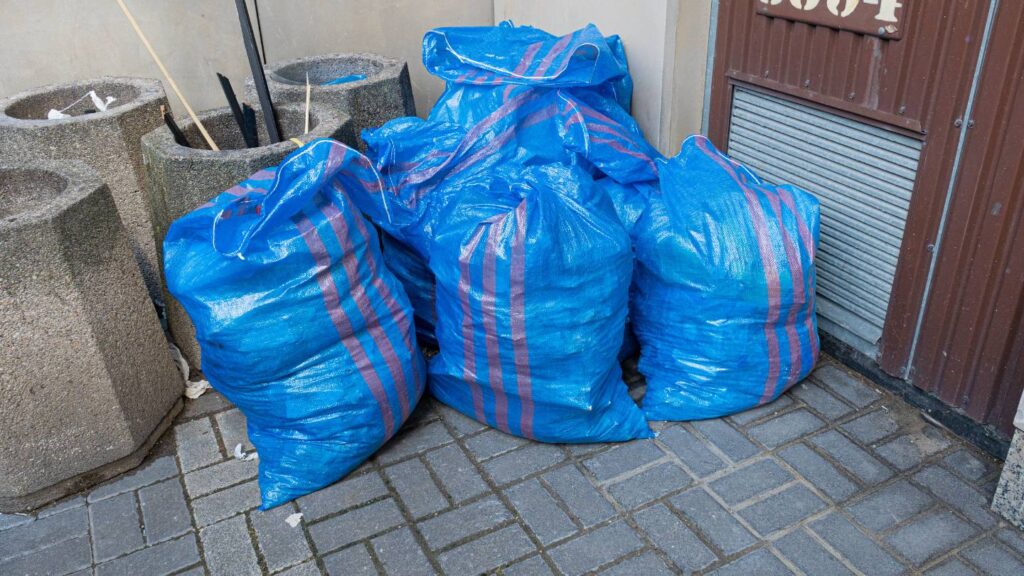Wasted food has a negative impact on both the ecosystem and the economy. One-third of the world's food supply is lost or wasted each year, according to the United Nations.
Glasshouse gas emissions, water scarcity, and lost revenue are just some of the unintended consequences of this waste. To alleviate this issue, one solution is to waste less food while cooking.
We can all do our part to ensure a more sustainable future by committing to a few easy changes in our daily routines that will drastically cut down on wasted food. Here, we'll show you how to cut down on wasted food in the kitchen with a few simple steps.
Why Worry About Food Waste?

Modern corporations can't afford to overlook the environmental damage caused by food waste. According to the 2021 Food Waste Index published by the United Nations Environment Programme, food service accounts for 26% of the world's annual food waste total of 931 million tonnes. Waste management systems are overwhelmed, and global crises like climate change, biodiversity loss, pollution, and food insecurity are exacerbated as a result.
When food is wasted, not only is the food itself wasted, but so are the enormous amounts of water, fossil fuel, and energy that go into its production and transportation. In addition, landfills are a major source of methane because of the food waste people throw away.
Cutting down on food waste is a good idea for more than just (substantial) environmental reasons:
- The costs of ordering, preparing, and discarding uneaten food are substantial, especially when added to the costs of the food itself.
- Customers today are more discerning than ever before, and they care deeply about environmental issues. The implementation of a comprehensive food waste policy demonstrates concern and can be used as a selling point on promotional materials.
Typical Myths Regarding Food Waste
While it's true that organics decompose, as was mentioned above, the process is much slower for organics that end up in landfill due to the lack of oxygen. Methane gas, not carbon dioxide, is produced during anaerobic waste breakdown.
In terms of global warming, methane is considered a more significant contributor than carbon dioxide. Accelerating the decomposition process by using a home composter or incorporating kitchen scraps into a garden can result in the release of carbon dioxide. Organic materials, however, decompose faster when exposed to aerobic processes in a home composter or garden.
While it is commonly believed that composting uneaten food is an eco-friendly solution, it is better to avoid wasting food altogether or finding alternative uses for it whenever possible. Composting is an effective way to recycle nutrients from inedible food scraps or food that is no longer fit for human consumption, but reducing food waste should be the priority.
Why Do We Waste So Much Food?
People throw away edibles for a variety of reasons. Though the specifics vary from home to home and person to person, studies have shown that many factors influence the amount of food we throw away on a regular basis. Those dietary preferences and routines are influenced by a variety of demographic and lifestyle factors.
A significant cause of food waste is attributed to excess food that is either bought or cooked but not consumed in time before it spoils. Among the various types of wasted food, produce such as fruits and vegetables, along with leftovers, constitute a considerable proportion.
Where Does Surplus Food Occur?
It's easy to generalise about food waste, but it's very different when hundreds of tonnes of broccoli go unharvested on a farm versus when a half-eaten plate of potatoes gets tossed. Although losses and waste occur at every point in the food supply chain, the vast majority occur at the retail and consumer levels in places like supermarkets, restaurants, and homes.
Wasted food occurs at multiple levels within a system, and actions taken at one level can have consequences further upstream or downstream. For instance, the aforementioned farm might not harvest all of its broccoli if it doesn't conform to the aesthetic standards of the stores that buy it. These stores developed these standards based on the opinions of their customers.
Which Foods Are Surplus?
More than three-quarters of the surplus food supply is comprised of fruits, meats, vegetables, prepared fresh deli items, seafood, milk and dairy, and some grain products such as bread and bakery items.
These perishable items are often discarded due to their short shelf life. In contrast, non-perishable foods such as canned goods, pasta, and highly processed, shelf-stable products are less likely to be wasted.
It's interesting to note that although seafood and meats are the most expensive items in the surplus food supply, they are the least wasted. On the other hand, more than one-third of all wasted food is produced.
Reduce Kitchen Waste

Food waste prevention is preferable to waste management in that it results in greater financial and carbon dioxide emission savings. Keep reading for some helpful tips on cutting down on the amount of food you throw away at home.
To reduce food waste in a restaurant, there are many strategies that can be implemented. One effective method is to perform a waste audit. This involves keeping track of where food waste is being generated in the kitchen by using the "three bin" method, which includes containers labeled for food preparation, spoiled food, and customer plates. By tracking the amount of garbage in each bin, restaurant owners can identify their biggest waste areas and find solutions to address them.
Another important step is to get staff involved in reducing food waste. Restaurants should raise awareness about the issue and provide training on proper waste sorting procedures for all employees. The best ideas often come from the kitchen and the front of the house, so it is important to solicit input from staff.
Proper storage of food is also crucial. Restaurants should keep their fridges and freezers at the appropriate temperatures and store perishables from highest to lowest on shelves. All packaging should contain descriptive labels, ingredients lists, potential allergens, and expiration dates. Keeping an up-to-date inventory of food storage areas, including expiration dates, is also important.
Practicing stock rotation is another key strategy. The "first in, first out" method ensures that older items are used before newer ones. Checking expiration dates daily is a good habit to develop. Menu planning is also an effective way to reduce food waste. By using ingredients in multiple dishes and creating daily specials that help eliminate food waste, restaurants can reduce waste and the total number of items they order.
When ordering ingredients, restaurants should exercise caution and only order what they anticipate using. Inspecting orders upon arrival and returning or rejecting any that appear to be spoiled is also important. Accurately predicting orders, whether manually or with the help of a digital system, can also reduce waste.
When prepping food, restaurant owners should carefully consider how much they will need to prepare in advance. Avoiding overly large servings and reducing the serving size of frequently uneaten items can also reduce waste. Additionally, leftover ingredients can be repurposed into new dishes, such as stocks and soups.
Offering a take-home option for customers to take their leftovers home can also reduce waste. Restaurants can also donate or sell unwanted items to those who can use them. Finding alternatives to landfill, such as composting, can also help reduce waste and save money on garbage collection.
Overall, reducing food waste in a restaurant requires a multifaceted approach that involves staff participation, proper storage and inventory, menu planning, and waste reduction strategies.
Ways to Prevent Wasted Food at Home
Reduce the amount of food wasted in your home by planning, preparing, and storing food in advance. To that end, consider the following advice:
Planning and Shopping Tips
You can save time and money by planning your weekly meals in advance. If you only buy what you know you will use, you're more likely to consume it all before it goes bad.
- Keep track of the meals and the ingredients that your family already enjoys, and you'll have a much easier time selecting, shopping for, and preparing meals that you're likely to eat.
- Before going grocery shopping, check to see what you already have in your fridge, freezer, and pantry. Create a weekly list of perishables and base your meal plans around them.
- Make a menu for the week before you go grocery shopping, and only get what you need for that week's meals.
- Create a shopping list based on the number of home-cooked meals you intend to serve. Think about how often you will eat out, how often you will reheat leftovers, and how often you will eat premade frozen meals.
- Make sure you don't waste money by overbuying by noting the number of servings per item on your shopping list. Two lunches' worth of salad greens, for instance.
- You can only save money by stocking up on food (thanks to buy one, get one free deal, etc.) if you consume it all before it goes bad.
- The baguette, lettuce, carrots, radishes, and lemons in this eco-friendly shopping tote are just the beginning.
- Because you can buy only as much as you need from bulk bins, you'll save money and cut down on wasteful packaging and excess food. It's important to properly label and store food in airtight containers when purchasing in bulk.
- Spend your money on imperfect foods or repurposed goods. While imperfect fruits and vegetables may look less than perfect, you can rest assured that they are just as safe and nutritious as their flawless counterparts. Upcycled goods are made from materials that would otherwise be thrown away.
FAQs About Food Waste
Reducing food waste is important because it has significant environmental, social, and economic impacts. Food waste contributes to greenhouse gas emissions, wastes valuable resources such as water and land, and costs households and businesses money. By reducing food waste, we can conserve resources, save money, and help the environment.
The goal for reducing food waste by 2030 is to reduce food waste going to landfills by 50% to 109.4 pounds per person.
You can reduce food waste in your kitchen by taking an inventory of your pantry, refrigerator, and freezer before going to the store to prevent overbuying, creating a meal plan, checking the temperature setting of your fridge, using the first in, first out (FIFO) system to keep your perishables organized, composting your food waste, and purchasing in line with daily sales.
You should keep your fridge at 40°F or below and your freezer at 0°F to keep your food safe.
Restaurants can reduce food waste by better buying, menu engineering, diversion, donation, and employee buy-in.
Conclusion
There are environmental and financial costs associated with food waste, including glasshouse gas emissions, water scarcity, and lost revenue. One way to deal with this problem is to reduce food waste during cooking. Reducing food waste is beneficial for more than just the environment; it also saves money by minimising the need to order, prepare, and dispose of food that isn't consumed. The lack of oxygen speeds up the decomposition of organic materials, and methane gas is produced during anaerobic waste breakdown, according to two common food waste fallacies. Composting leftover food is an eco-friendly way to deal with the problem of methane gas, which contributes more to global warming than carbon dioxide.
Excess food that is purchased or prepared but not eaten before it goes bad is a major contributor to food waste. Fruits, meats, vegetables, fresh deli items, seafood, milk and dairy, and some grain products like bread and bakery items make up the surplus food supply.
Food waste should be minimised in any manner possible, however composting leftovers and spoiled food is an efficient way to reuse nutrients. Due to their short shelf life, perishable foods are frequently thrown out, while non-perishables like canned goods, pasta, and shelf-stable products are less likely to be thrown away.
There are a number of methods that may be used to cut down on food waste in the kitchen, including conducting a waste audit, involving employees, storing food properly, rotating inventory, and preparing meals in advance.
Using these methods, you can cut down on wasted food and your shopping list. More than a third of all food is wasted, with seafood and meats accounting for the largest share. It is important for eateries to only order what they will need, to examine deliveries, and to precisely predict customer demand. Food prepping is important, and it's important to remember that leftovers can be used in other recipes. In order to reduce the amount of waste sent to landfills, eateries can also sell or donate unused things.
Planning, preparing, and storing food in advance are essential for reducing food waste in the home. Make a list of the foods that will expire within the week, and schedule your meals accordingly. Make a list of everything you need to buy based on how many home-cooked meals you plan to serve. Mark the number of servings per item so you don't overbuy. To save money and reduce packaging waste, simply purchase what you will use from bulk bins. To ensure the safety and nutritional value of defective foods or recycled commodities, it is worth spending money on them.
Content Summary
- One-third of the world's food supply is lost or wasted each year, according to the United Nations.
- Wasted food has a negative impact on both the ecosystem and the economy.
- Glasshouse gas emissions, water scarcity, and lost revenue are just some of the unintended consequences of this waste.
- To alleviate this issue, one solution is to waste less food while cooking.
- Committing to a few easy changes in our daily routines can drastically cut down on wasted food.
- Food service accounts for 26% of the world's annual food waste total of 931 million tonnes.
- Cutting down on food waste is a good idea for more than just environmental reasons.
- The costs of ordering, preparing, and discarding uneaten food are substantial, especially when added to the costs of the food itself.
- Customers today care deeply about environmental issues.
- Methane gas, not carbon dioxide, is produced during anaerobic waste breakdown.
- Methane is considered a more significant contributor to global warming than carbon dioxide.
- Composting is an effective way to recycle nutrients from inedible food scraps or food that is no longer fit for human consumption.
- Reducing food waste should be the priority.
- Studies have shown that many factors influence the amount of food we throw away on a regular basis.
- A significant cause of food waste is attributed to excess food that is either bought or cooked but not consumed in time before it spoils.
- The vast majority of food waste occurs at the retail and consumer levels in places like supermarkets, restaurants, and homes.
- Wasted food occurs at multiple levels within a system, and actions taken at one level can have consequences further upstream or downstream.
- More than three-quarters of the surplus food supply is comprised of fruits, meats, vegetables, prepared fresh deli items, seafood, milk and dairy, and some grain products such as bread and bakery items.
- These perishable items are often discarded due to their short shelf life.
- Non-perishable foods such as canned goods, pasta, and highly processed, shelf-stable products are less likely to be wasted.
- Seafood and meats are the most expensive items in the surplus food supply, but they are the least wasted.
- Food waste prevention is preferable to waste management in that it results in greater financial and carbon dioxide emission savings.
- Performing a waste audit is an effective method for reducing food waste in a restaurant.
- Proper storage of food is crucial to reducing waste.
- Labeling and organizing food in the fridge can help prevent it from going bad.
- Planning meals and using a shopping list can help prevent overbuying and food waste.
- Using leftovers and scraps creatively can help reduce waste.
- Storing food in the freezer can help prolong its shelf life.
- It's important to get staff involved in reducing food waste in a restaurant.
- The best ideas for reducing food waste often come from the kitchen and the front of the house.








